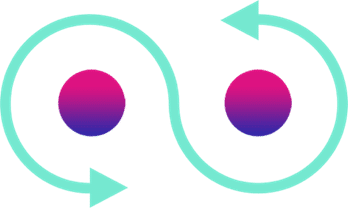
Speculation about what the post-COVID world will look like is on the rise. Will business and life in general go back to normal, with COVID-19 being just another event in human history to be turned into a case study for business and medical schools? Or will the new normal be as different from what was before as the factory was from the farm?
While no one can sketch the business world of the future with accuracy, all of us are busy preparing ourselves for what may lie ahead.
Schedule a call with a Pragati Leadership expert to discuss how we can support your strategic objectives.
Schedule your CallIn the last three months, both offline and online spaces have been inundated with “How-Tos” for our professional and personal lives: how to manage working from home, how to manage our finances in these uncertain times, how to take care of our wellbeing, how to engage our teams and employees at large, how to build skills for the future, and so on.
An interesting phenomenon to notice is that almost everyone is engaging in some form of self-care and self-improvement these days.
What does this tell us?
To me, this is a reconfirmation of the fact that humans are infinitely adaptable. Then why do we need change-management interventions? I believe it is because change needs to happen at a certain pace (more often faster than slower), and this is where the idea of agility comes in. Agility is the speed at which the change is adapted to. It is what helps you take action at the right pace and time in the face of new conditions in order to survive and thrive. No matter where we are personally and professionally, we need to exhibit agility to cope with the challenges that we face.
For instance, an athlete requires both physical agility and mental agility to achieve peak performance. Similarly, leaders need to be taught via leadership training programs, to exhibit different types of agilities for continued performance in turbulent times.
Let us examine a few types of agilities:
People Agility: Any change initiative will have its stakeholders, that is, people who have an emotional and/or financial stake in what you are proposing. How do you handle the different perspectives and needs that will arise? Understanding the perspectives of the various stakeholders and ensuring greater alignment is the key to success. This also involved being emotionally intelligent, that comes under emotional intelligence training.
Contextual Agility: This is something corporate trainers focus on the most. This is the ability to decide which change initiatives are the worthiest of your time and effort by focusing on the larger systemic context of your initiatives in order to influence stakeholders. It is the capacity to focus your attention on the broader perspective of your endeavours.
Learning Agility: How open are you to feedback and developing your skills. How often do you step back and reflect on your abilities and limitations?
Innovation Agility: In order to lead in an era where not only do we not have answers to some very important questions, we are not even sure whether we are asking the right questions, we must become comfortable in not knowing and engage the creative capacities of the key stakeholders in problem solving.
What are the strengths and limitations of your leaders as they relate to these four types of agilities? Are the strengths being leveraged and limitations being overcome to steer your organization through this crisis?
Share on Social Channels
Our Categories
Categories
- Behaviorial (6)
- Blog (240)
- Coaching (8)
- Corporate Trainers (6)
- Developing Collaboration (12)
- Emotional Intelligence Training (11)
- Executive Leadership Program (26)
- First Time Manager Training (10)
- Inspirational Leadership (17)
- Inspiring and Successful Leadership Awards (16)
- Leadership Awards (37)
- Leadership Development (118)
- Leading Virtual Teams (6)
- Management Development (29)
- Marketing (2)
- Negotiation Skills Training (5)
- Organizational Transformation (24)
- Others (24)
- Stakeholder Management (3)
- Strategic Leadership Development Program (3)
- VUCA Leadership (2)
- Wholesome Leadership (23)
- Women Leadership (15)
Recent Insights
Aspiring to be seen as an effective leader? Learn about developing your executive presence (EP);...
Leaders can no longer rely on outdated command-and-control approaches. Looking ahead, we envision a future...
Having a strong leadership pipeline is more important in today’s dynamic environment than ever before....
Congratulations! You have been promoted to a managerial position. This promotion is most likely the...
Leaders in today’s dynamic and fast-paced world need more than technical skills, strategic thinking, and...
